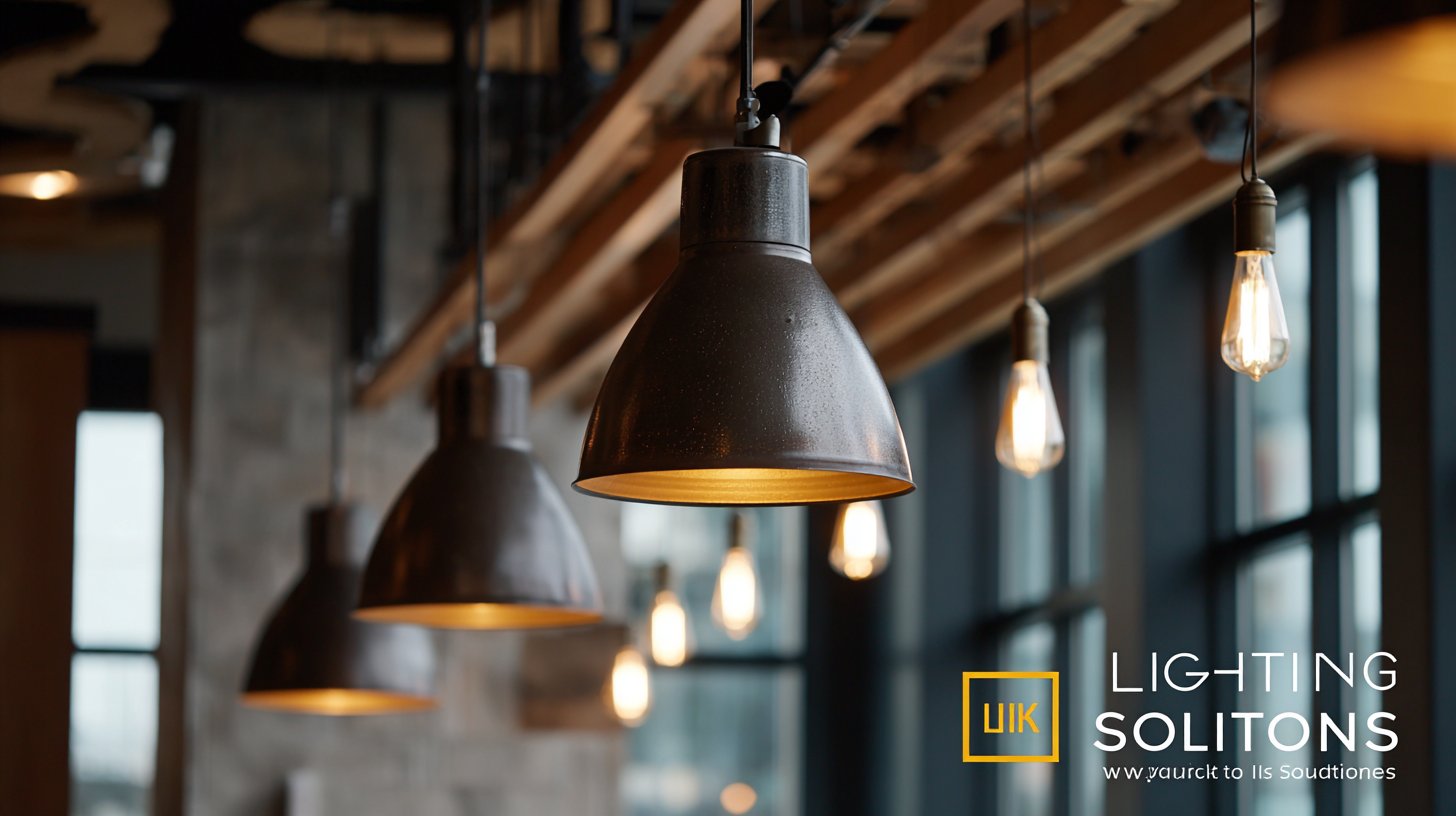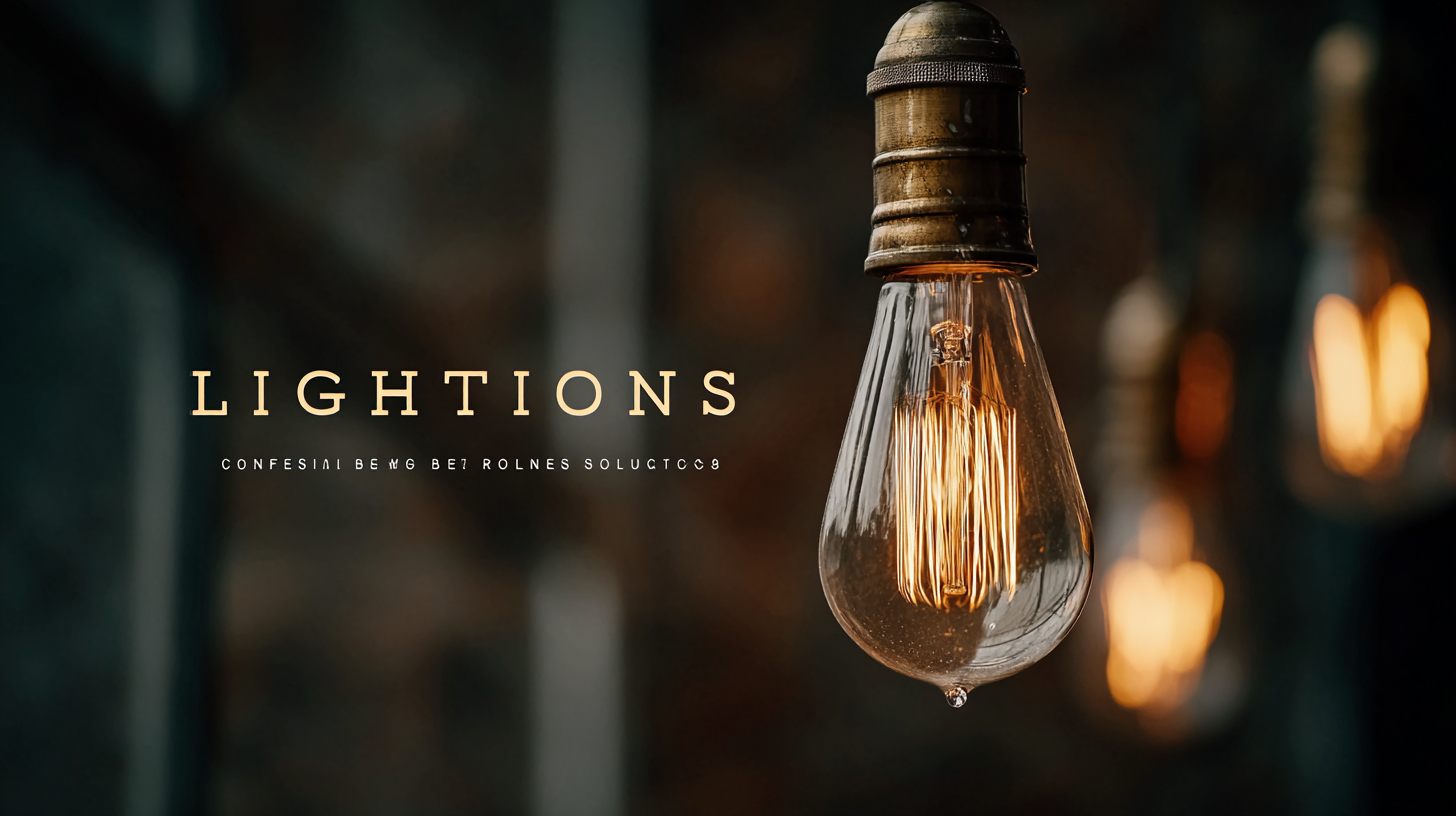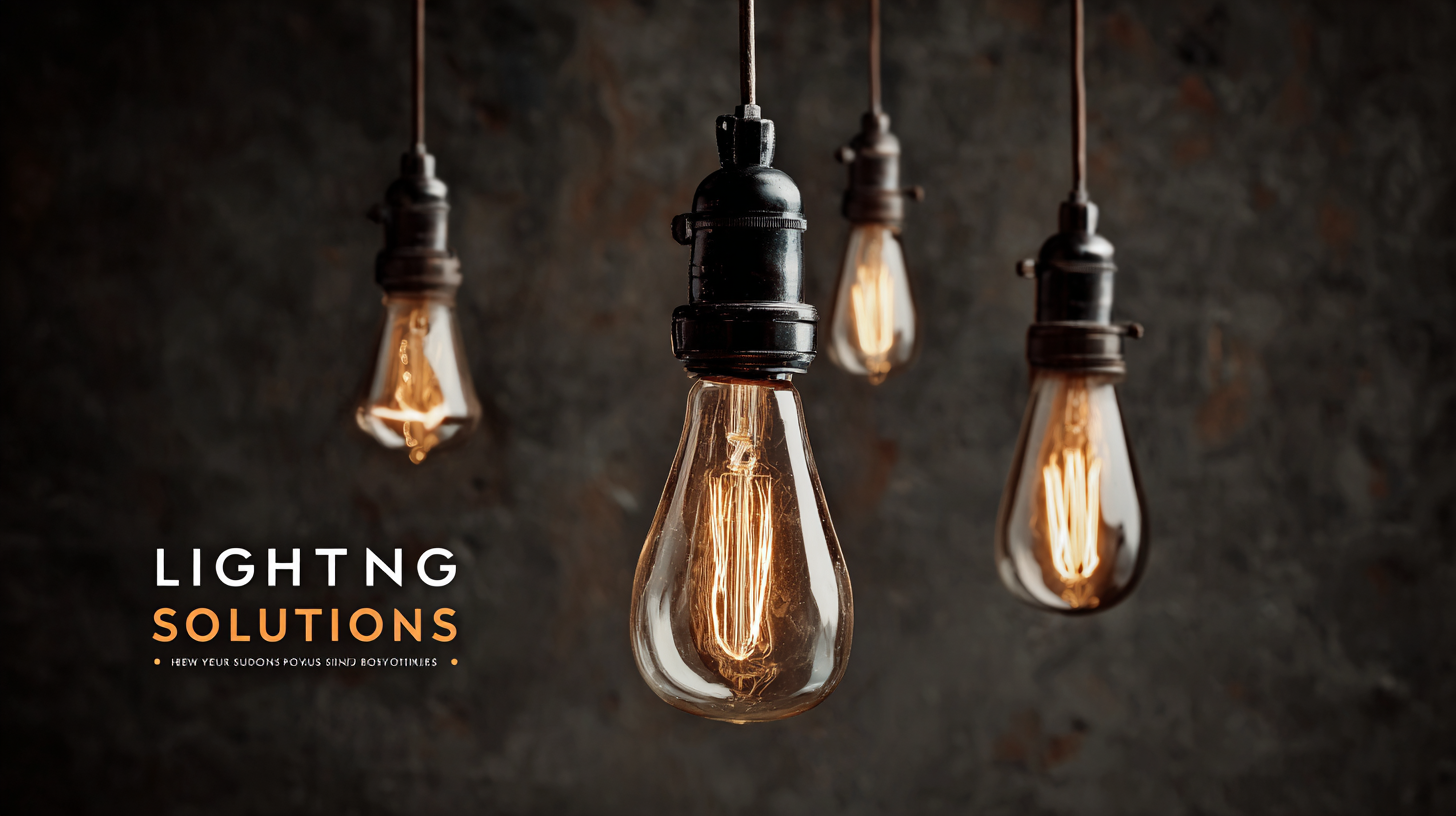
In today's fast-paced business environment, the significance of top-notch Lighting Solutions cannot be overstated. According to the U.S. Department of Energy, efficient lighting can reduce a business's energy costs by up to 75%, highlighting the critical financial benefits of investing in quality lighting. Furthermore, a study published by the National Institutes of Health found that proper lighting can enhance employee productivity by as much as 20%, thereby directly impacting a company's bottom line. As competition intensifies, businesses must recognize that the right lighting does not only improve aesthetic appeal but also fosters a healthier and more productive workspace. With these compelling statistics in mind, it becomes clear that implementing the best Lighting Solutions is an essential strategy for any business looking to thrive in today’s economy.

Quality lighting plays a pivotal role in enhancing employee productivity and well-being in modern workplaces. Recent studies have highlighted the significant impact of natural light on employee health, with approximately 60% of workers reporting inadequate access to it. As the global human-centric lighting market is expected to grow to USD 3.45 billion by 2030, organizations are beginning to recognize the importance of incorporating advanced lighting solutions that not only illuminate spaces but also cater to the biological needs of their employees.
Moreover, the relevance of office air quality cannot be overlooked. Insightful research indicates that poor air quality can lead to cognitive impairments, affecting response times and overall productivity. By strategically designing office environments that prioritize good air circulation alongside optimal lighting, businesses can foster an atmosphere that promotes engagement and efficiency.
As organizations adapt to the evolving nature of work, investing in high-quality lighting solutions will prove crucial for enhancing employee satisfaction and performance, ultimately driving long-term success.
Upgrading your lighting system is not just about aesthetics; it's a significant step toward energy efficiency and cost savings. According to the U.S. Department of Energy, lighting accounts for approximately 15% of an average commercial building's energy use. By switching to energy-efficient lighting solutions, such as LED fixtures, businesses can save up to 75% on energy costs compared to traditional incandescent lighting. This shift not only reduces utility bills but also minimizes the environmental impact, which is a growing concern for consumers today.
Tip: Consider conducting an energy audit to assess your current lighting setup. This evaluation will help identify areas where energy can be conserved and provide you with a roadmap for implementing the best lighting solutions. Additionally, many utility companies offer rebates for upgrading to energy-efficient lighting, which can further reduce the initial investment.
Furthermore, energy-efficient lighting often comes with longer lifespans and lower maintenance costs. For instance, LEDs can last up to 25,000 hours or more, compared to around 1,000 hours for incandescent bulbs. This longevity means fewer replacements and decreased labor costs associated with maintenance. Investing in superior lighting can transform not just the efficiency of your business operations but also enhance the overall environment for employees and customers alike.
Tip: Leverage smart lighting controls to optimize energy use. Motion sensors and timers can automatically adjust lighting levels based on occupancy, ensuring that energy is only used when needed.

Lighting plays a crucial role in shaping the customer experience in retail spaces. The right lighting can create an inviting atmosphere that encourages shoppers to linger and explore. For example, strategically placed ambient lighting can highlight merchandise, drawing attention to key products while softening harsh shadows. This not only enhances the aesthetic appeal of the store but also helps in building a connection between customers and the items on display. By using warmer tones in specific areas, retailers can create a cozy and welcoming environment, ultimately influencing purchase decisions.
Moreover, effective lighting can significantly impact mood and perception. Bright and vibrant lighting can energize a space and make products appear more attractive, while softer, dimmer lights can create a relaxed ambience that invites shoppers to unwind. Incorporating dynamic lighting solutions that can change throughout the day allows retailers to adapt their environment to match the time or special events, reinforcing brand identity and improving overall customer engagement. In an increasingly competitive market, harnessing the power of lighting is essential for creating memorable shopping experiences that drive sales.
Proper illumination in work environments is crucial for ensuring safety and enhancing employee well-being. Adequate lighting significantly reduces the risk of accidents and injuries, as workers are more likely to see potential hazards when their surroundings are well lit. Lighting expert Dara Greaney emphasizes that effective lighting schemes can positively impact workers' mood, productivity, and overall health. Poor lighting, on the other hand, can lead to eye strain, fatigue, and increased error rates, which ultimately compromise safety.
Moreover, adhering to OSHA compliance regulations highlights the importance of workplace safety standards, including proper lighting. An updated OSHA compliance checklist serves as a vital tool for organizations to assess their work environments and ensure that they meet safety criteria. By prioritizing a culture of safety that includes optimal lighting solutions, organizations not only protect their workers but also foster a more engaged and productive workforce. This commitment to safety reinforces trust and loyalty among employees, contributing to a healthier workplace culture.
In today's fast-paced business environment, the importance of smart lighting solutions cannot be overstated. Recent trends indicate that modern businesses are increasingly adopting advanced lighting technologies that not only enhance aesthetics but also improve energy efficiency and productivity. Smart lighting systems equipped with IoT capabilities allow businesses to control lighting remotely, customize settings for different areas, and even adjust brightness based on occupancy. This level of control not only helps in reducing energy costs but also contributes to a more comfortable working environment.
Moreover, smart lighting solutions are increasingly integrating with other smart technologies to create a cohesive ecosystem within business premises. For example, lighting can be synchronized with HVAC systems to maintain optimal temperatures while minimizing energy consumption. Additionally, innovative features like circadian lighting mimic natural light patterns, promoting employee well-being and improving focus. As businesses strive to create a more productive and sustainable atmosphere, investing in the latest trends in smart lighting solutions has become a strategic necessity. Embracing these technologies will not only elevate the workspace but also reflect a company’s commitment to innovation and sustainability.

Let us help you get started with our superior LED lighting products.
Get all the latest news from BrightLED.
Copyright © Bright LED. All rights reserved.
STAY CONNECTED

